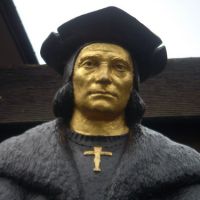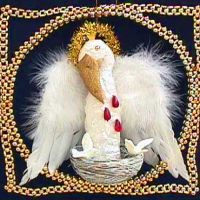The denial of student organization status to the John Hopkins pro life group Voice For Life ( VFL ) by the Student Government Association is starting to get more and more attention. Related to that is the rather jaw dropping endorsement of that view by the John Hopkins student newspaper of all things. See It’s not a matter of Freedom of Speech .
To where it said in part among many other WTH things :
This case revolves instead around the fundamental duty of the University to
protect its students from undue harassment. VFL is not appealing to the
Judiciary Committee for the sake of freedom of speech. It is applying, rather,
to receive University sponsorship for potentially offensive behavior.
Rubber fetuses and plastered photos of aborted babies on the Breezeway
infringe upon the University’s Anti-Harassment Policy, which precludes an
activity which is “so severe or pervasive that it interferes with an
individual’s work or academic performance or creates an intimidating, hostile or
offensive working or academic environment.” Students at a private university on
University-owned grounds should not be forced to view images of fetuses on
school property.
F.I.R.E whose mission is partly to protect First Amendment values on campus noted this is an 180 from the newspapers position just two years ago.
Susan Kruth in here letter to the John Hopkins newspaper in an effective ways shows the dangers of the both the SGA and the newspapers position. She tackles the objections to the VFL I think quite well. As to " harassment " she notes :
Finally, The News-Letter stretches JHU’s harassment policy to include
speech that does not rise to the legal standard of student-on-student harassment
in education. The Supreme Court held in Davis v. Monroe County Board of
Education (1999) that speech constitutes unprotected harassment when it is
targeted, discriminatory conduct “so severe, pervasive, and objectively
offensive that it effectively bars the victim’s access to an educational
opportunity or benefit.” VFL President Andrew Guernsey clarified in speaking with The News-Letter that the
organization planned to “speak to women in a peaceful, non-aggressive manner
[and] hand out literature.” To call this harassment is to trivialize real
harassment. But even if VFL chose to illustrate its point with gruesome images,
those images would remain protected speech. Johns Hopkins students are not
children; they are adults. And adults in a college setting do not have a broad
right not to be confronted with ideas or images that make them uncomfortable—nor
should they .
This reminds me of a rather important case that is happening out in Colorado . That is ‘Scott v. Saint John’s Church in the Wilderness’.
As Religion Clause noted in this case the
Colorado appeals court (full
text of opinion) enjoined anti-abortion protesters from engaging in certain
kinds of protest activity aimed at a church they believed had gone astray. The
injunction applied during periods from shortly before to shortly after church
services. The primary portion of the injunction challenged on appeal prohibits
defendants from:
displaying large posters or similar displays depicting gruesome images of mutilated fetuses or dead bodies in a manner reasonably likely to be viewed by children under 12 years of age attending worship services and/or worship-related events at plaintiff church.
This has set off a good many alarm bells and a cert petition has taken to the U.S. Supreme Court . These alarm bells have included many factions. See
Amicus Brief Supporting the “Gruesome Images” Petition, from Liberal Free Speech Scholars
and
Amicus Brief Supporting the “Gruesome Images” Petition, from Religion Clauses Scholars
However this Amicus Brief caught my eye like it has some others. See Amicus Brief Supporting the “Gruesome Images” Petition, from Historians of Art and Photography .
Their summary argument as quoted is :
Photographs, especially gruesome photographs, can speak with a power that text often cannot. Since the Civil War, people have used the photograph’s ability to stir emotion and engender visceral understanding to provoke debate about some of the most important issues our nation has faced, namely, issues of war. Unsurprisingly, many of the most important war images have been “gruesome.” Yet under the Colorado Court of Appeals’ interpretation the First Amendment, these photos would be subject to ban from public display precisely because they are evocative. Because the Colorado Court of Appeals’ opinion presents a threat to an historically-grounded method of expression that lends itself naturally to vibrant debate, this Court should grant certiorari and reverse.
Very true. I hope perhaps these friend of the court briefs in a case thousands of miles away gets viewed by the folks at John Hopkins.














No comments:
Post a Comment